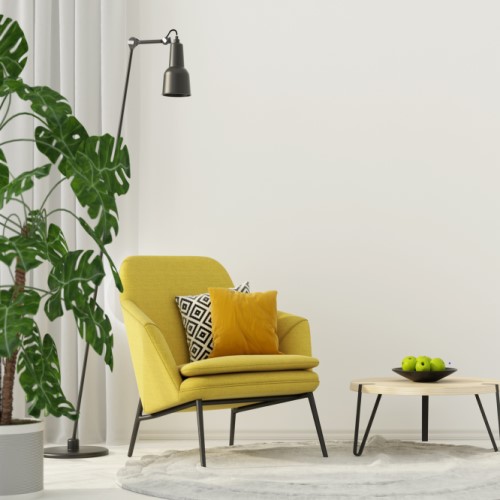To make it easier for you to paint and to ensure the colours you chose appear as you expected them to, it’s important to adequately prepare your interior walls for painting.
They are the canvas for your vision after all!
Estimated Time
An hour to a day (24 hours)
Depends on wall size and the amount of flaws it has
What you're going to need
-
Canvas drop cloths
-
Plastic drop sheets for covering furnishings
-
Bucket of Sugar Soap
-
Sponge
-
Bleach
-
Scraper
-
Sand paper 180 or 240 grit
-
Pre-mixed filler
-
Gap sealant
-
Filling blades
-
Painter’s masking tape
Undercoat materials:
-
Undercoat paint
-
A 230 or 270mm paint roller frame
-
Cutting in brush (50mm or 63mm)
-
A matching roller cover with a 9-12mm nap
-
A matching paint tray
-
A roller pole
Step-by-step guide
-
Remove any fixtures, such as picture hooks and light switch covers from walls and remove all furniture and belongings from the room. This creates a safer environment for you to work in and also gives you easier access to those hard to reach corners. Sometimes it may be possible to move furniture into the centre of the room.
-
Place drop cloths on floors and on any furnishings that remain in the room. Canvas drop cloths are great for absorbing spilt paint while plastic drop cloths act as a waterproof shield and are recommended for covering furnishings. We do not recommend plastic drop sheets on carpet as it can be slippery.
-
Before you begin, open any windows or doors in the room to improve ventilation and drying time.
-
Wash walls with Sugar Soap (following label directions) to get rid of any dust. Rinse the walls to remove any traces of soap and allow time to dry. This means the paint will adhere to the wall, not the dust.
-
If any mould is present, use a bleach solution to remove it from walls. Bleach solution to be roughly 1 part bleach to 3 parts water or as per label directions. Ensure the Manufacturer Personal Protective Equipment requirements are followed. Carefully apply the bleach solution to walls using a sponge and leave to soak for 15 minutes. Rinse thoroughly and again, allow them to dry completely.
-
Assess the walls for any damage or surface lumps and bumps.
-
If existing paint is peeling or flaking, scrape back the area to remove the loose paint and then gently sand the surface so no edges of the old paint are obvious.
-
Fill any dents or nail holes in the walls with pre-mixed filler, using filling blades.
-
Use acrylic gap sealant for cracks or gaps in areas where there may be movement e.g. near doors and windows.
-
Once the fillers and sealers have set, sand down these areas, excluding gap sealant. Only powder fillers can be sanded. Gap filler is applied as a smooth finish and sanding it can tear it. While you’re there, sand down any rough or shiny spots to improve adhesion and finish.
-
Spot prime the filled areas with Easy Living® Prep Paint Sealer Primer Undercoat.
-
Apply painter’s masking tape to fittings which can’t be removed and any edges which may be fiddly and difficult to paint around, such as skirting boards and fixed shelving.
-
Now apply a coat of Easy Living® Prep Paint Sealer Primer Undercoat to the entire wall. This allows for good adhesion and blocks out dark or existing colours, making it easier to paint over, providing a smoother and more professional looking top coat.
-
Once your wall is dry and prepared, you're ready to paint your wall!


